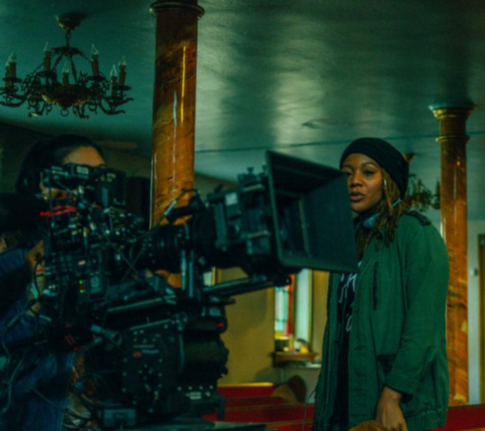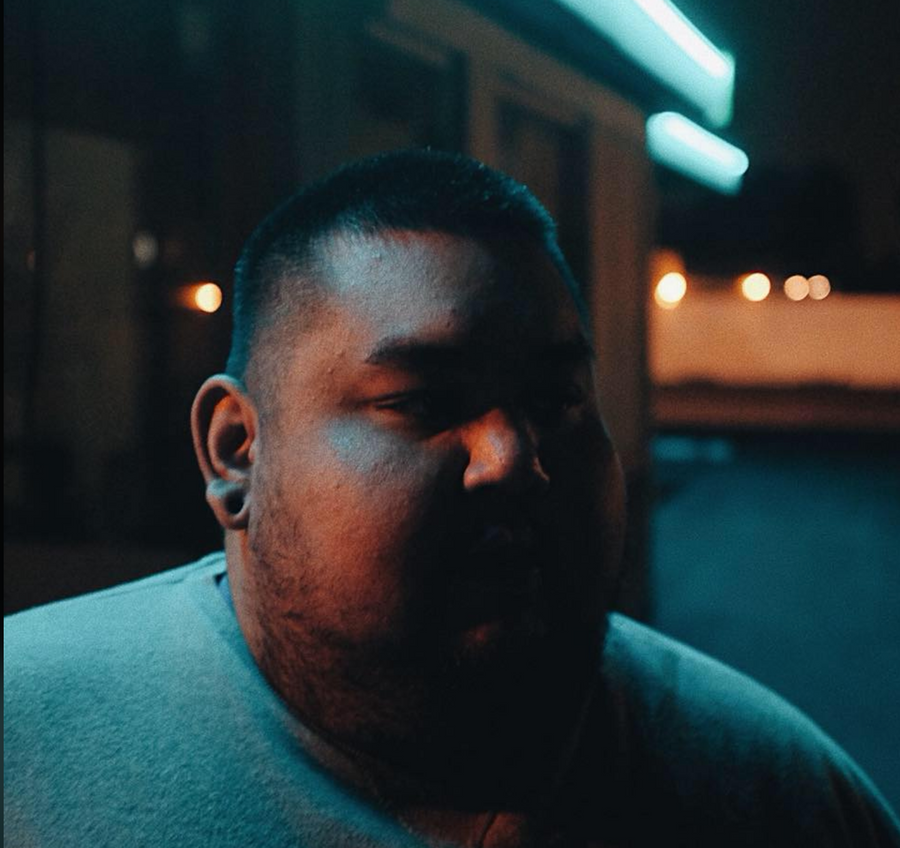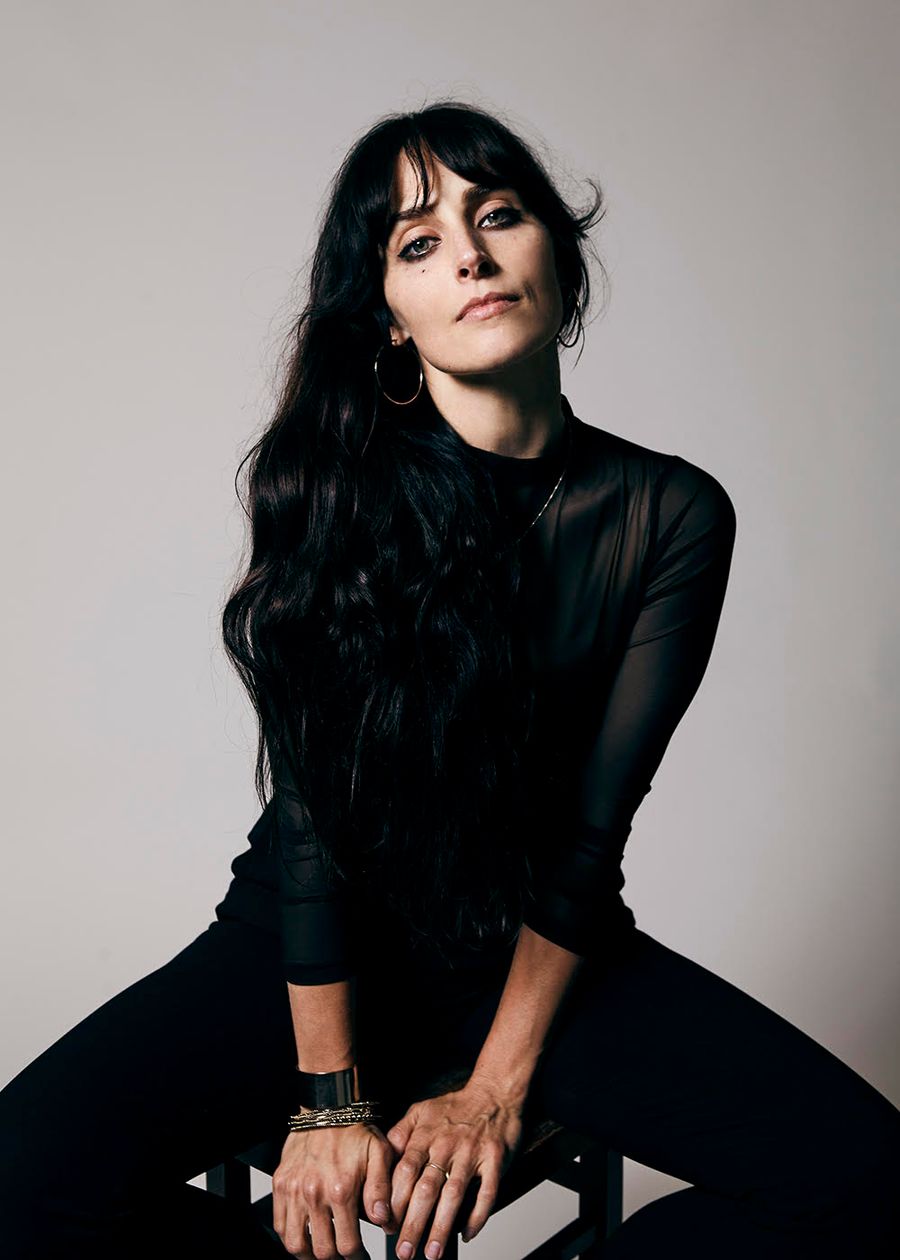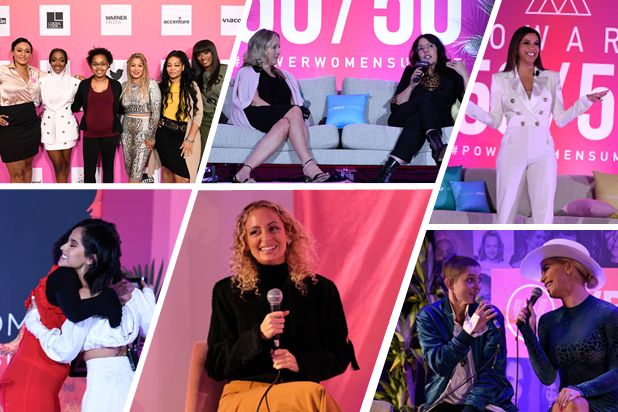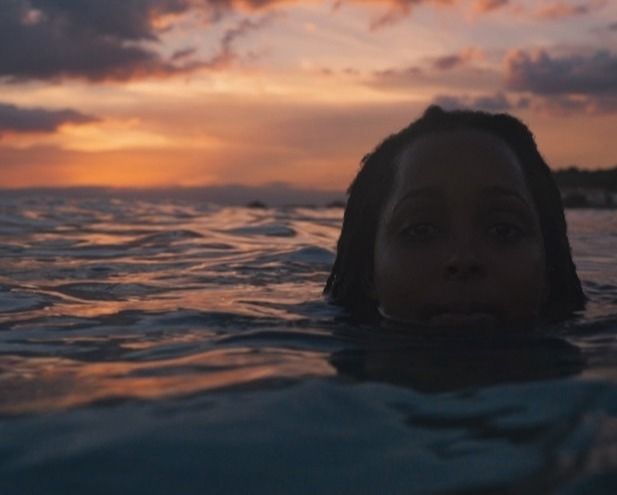Culled from a huge pool of submissions, this year’s competitive Sundance Film Festival lineup is stacked with incredible films by women directors—including a number of films by members of the Free The Bid family!
One of the newest additions to Free The Bid’s database of directors is filmmaker Nikyatu Jusu, whose short film "Suicide by Sunlight" will be making its debut in Park City at the 2019 Festival. Nikyatu follows Valentina, a day-walking black vampire protected from the harmful effects of the sun by the melanin in her skin, struggling to reconnect with her children and navigating roles (caregiver, predator) that are fundamentally at odds with one another. Fellow Free The Bid director Daisy Zhou steps behind the lens as the film’s cinematographer, crafting a visually resonant world for Valentina to inhabit.
"Suicide By Sunlight", which was the recipient of the Tribeca Film Festival and Chanel’s Through Her Lens grant, is only the beginning of Nikyatu’s exploration of this particular alternate universe—look out next for an episodic series, created for streaming and television.
Although the full film is not yet able to be screened online, stay tuned for part 2, after "Suicide by Sunlight" completes its festival circuit!
We spoke to Nikyatu about being inspired by West African and Caribbean folklore, evolving as a filmmaker alongside her crew members during the shoot, and the importance of honing your craft as a writer.
What inspired you to write "Suicide by Sunlight"? What led you to the initial idea, and how did it evolve as you progressed?
Nikyatu Jusu: This journey started seven years ago and throughout the process, SBS has taken on various iterations: from a web-series, to a feature film script, to the TV series attached to our short film premiering at Sundance.
I’ve always been a fan of the vampire genre, consuming classics like Vampire in Brooklyn, Interview With the Vampire, Blade, True Blood, Let the Right One In, Trouble Every Day, etc. Once I discovered sci-fi novelist Octavia Butler and started digging into vampire mythology as it exists in West Africa and the Caribbean, from the Ghanaian Asanbosam to the Haitian Loogaroo, I knew I could remix this folklore in a way that felt uniquely authentic, grounded in heritage.
We created a world in which Black Vampires, protected by their melanin, can day-walk. Because of their biological advantage of being protected from the sun, they are able to seamlessly blend into humanity. From this premise, so many narrative themes and questions surfaced, giving me more than enough fodder to engineer the blood, sweat, and tears that became "Suicide By Sunlight." I originally conceived of this concept as a series, because this world is much too rich to cram into any other medium.
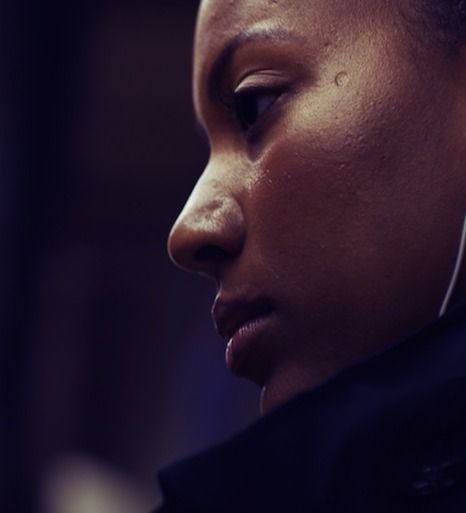
You were the recipient of Tribeca and Chanel’s prestigious Through Her Lens production grant. Can you tell us about the journey to making this film a reality—what did the process of writing, financing, bringing together a crew, and all other steps leading up to the film’s production look like?
It’s been a relatively speedy process from us winning the grant in October 2017 to assembling our team. I attached a co-writer, Robin Shanea Williams, whom I met in NYU Grad Film. While I was in the filmmaking program, she was in the Dramatic Writing Program. Her forte is structure, and I knew her writing skills complemented mine. One of my most pivotal attachments has been my producer, Nikkia Moulterie. She played a major role in introducing me to my DP, Daisy Zhou, who brilliantly led an all Woman Camera Department that I’m immensely proud of. I talk a bit about this here.
We shot a hyper ambitious short film with over six locations (which I would never encourage) from a church, to a hospital, to a night club, over the course of four neck break speed days. Because I’m a masochist, I also directed three kids under the age of 10 in this short film—also would not recommend. All struggles aside, the team we chose has been one of the most solidly dedicated and immensely talented teams I’ve had the honor of working with; from our star, Natalie Paul, to our AD Monica Palmieri. We were able to accomplish what you see on the screen because we moved seamlessly in unison, a well oiled production machine.

Who were some of your inspirations, in terms of story and visual aesthetic?
Though there are myriad elements of cinematic macabre in "Suicide By Sunlight," this darkness is balanced with atmospheric quietude and dripping seduction. I collaborated heavily with my DP Daisy. She has an unrivaled visual aesthetic that I trusted, and she presented me with an exhaustive Pinterest board, referencing inspiration from oil paintings to photography. I appreciated that her references didn’t simply rely on films.
It was important for us to have a strong visual language, but also to ground our vampires in elements of hyper realism. My goal was to create fully flushed out sympathetic characters with universal desires and needs that most audiences could identify with, regardless of the genre.
Some filmmakers I referenced for tone/style/execution:
Thomas Alfredson – Let The Right One In
Jennifer Kent – The Babadook
Lynne Ramsay – Morvern Caller; We Need To Talk About Kevin
Claire Denis – Trouble Every Day
Steve McQueen – Shame
Chan-wook Park – Thirst; Sympathy For Lady Vengeance
Christian Petzold – Ghosts
Andrew Dosunmu – Restless City
How else did you and Daisy work together to communicate your shared vision in the final film?
I interviewed a few DPs and couldn’t shake Daisy’s cinematography reel. I made an informed decision in choosing her, and because we hung heads and shot listed extensively prior to our shoot, I was able to focus on directing my actors while trusting Daisy to completely oversee the visual language of SBS.
"I knew I could remix this folklore in a way that felt uniquely authentic, grounded in heritage."
What were the greatest challenges you faced during production of this film?
The biggest challenge was post production VFX. I really wanted to nail down what it could look like for the sun and our Vampires’ melanin to form a symbiotic relationship, in which there is movement glimmering just beneath the skin whenever they walk through the world, essentially highlighting the various hues of brown that blackness comprises. We worked really hard with a few different VFX artists and kinda sorta nailed it.
Fantasy and sci-fi, as genres, allow storytellers the potential to observe elements from our own culture through a different perspective; the best examples of both are directly relevant to ongoing cultural conversations. How did the fantasy elements of this story allow you to discuss issues within the society we live in—race, class, gender, etc.?
The myth of a post-racial America can no longer reign in the midst of our current political climate. Racially motivated violence proliferates. Under the umbrella of the 45th President, racists are even more emboldened in violently declaring their hatred for the “other.” Fantasy is an apt stratosphere to explore, in creative ways, who that “other” is. With the box office success of Jordan Peele’s Get Out, for example, black Filmmakers like me are invigorated to contribute to the cinematic canon of horror and fantasy while maneuvering these social issues.
Race is a social construct, similarly to vampirism. Race is fictional; however, unlike the fantasy world of vampires that can end with the click of a button or a close of a book, the tragic consequences for the narratives of race can’t be avoided and have obvious links to the past and the present.
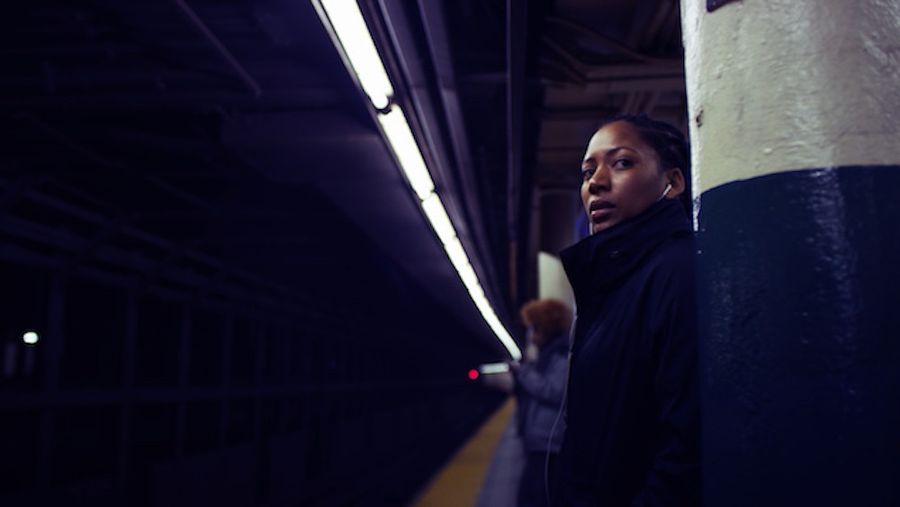
Earlier this year, there was a controversy sparked when producer Jason Blum made the claim that there are very few women directors interested in creating horror films. What do you think that you, and other women who direct horror, can bring to the horror genre that could push its possibilities in new directions?
I, for one, know a myriad of women directors interested in creating within the horror genre. One of my favorite recent horror films is Jennifer Kent’s The Babadook. It lingered with me in ways that the stereotypical blood and gore of Horror films past haven’t. I think what’s brilliant about it is that it explores physical manifestations of our deepest darkest fears—personifying the protagonist’s internal conflict in a horrific way.
In my opinion, some of the scariest horror films play on reflections of our own humanity turned back at us in a menacing way, utilizing familiar struggles e.g. grappling with death, depression, loss, loneliness, etc. Women filmmakers tend to inherently have more of a grasp on empathy due to the manner in which we have to navigate a sometimes misogynistic world. We are conditioned to gauge other people’s emotions in order to survive. I could go on a long diatribe with this, but I’ll simply say: in order to paint compelling characters, one must be empathetic, and women filmmakers are adept at exploring this humanity within the genre of horror—maximizing the depths of just how scary the average human’s fears can be.
Did the process of creating this film strengthen your skills as a filmmaker? In what ways?
It’s very important to me to build my team horizontally. Rather than seek out people who are much higher than me in terms of professional hierarchy, I prefer to learn alongside a team that I trust, a team that learns in parallel to myself. Many of us stepped out of our comfort zones to make this film. This is my first official foray into horror, yet it is where I most feel at home. We learned about everything from various textures of artificial blood with amazing on set special FX artists, to post-production VFX workflow for elements such as adding dynamic sunlight just beneath our vampires’ skin. Stepping out of my comfort zone in terms of the aforementioned and so much more (this is the biggest crew I’ve worked with thus far), allowed me to grow more confident in my abilities. It’s true that you can only expand as an Artist just outside of your comfort zone.
Congratulations on your film’s Sundance premiere! Can you tell us about the road to Sundance, after the film’s completion? What aspects of the festival are you most excited about?
Thank you!
The road to Sundance is paved with expenses I don’t have money for! Ha. The reality is that film festivals can be very expensive, but I know this is an investment in my career.
I’m looking forward to forging the connections will facilitate me turning this into a TV series. We have a team, the pilot is ready to go—we’re ready. I’m really excited about the exposure a festival like this grants. It’s a wave I have to ride strategically, because people forget about you very quickly in this industry ; )
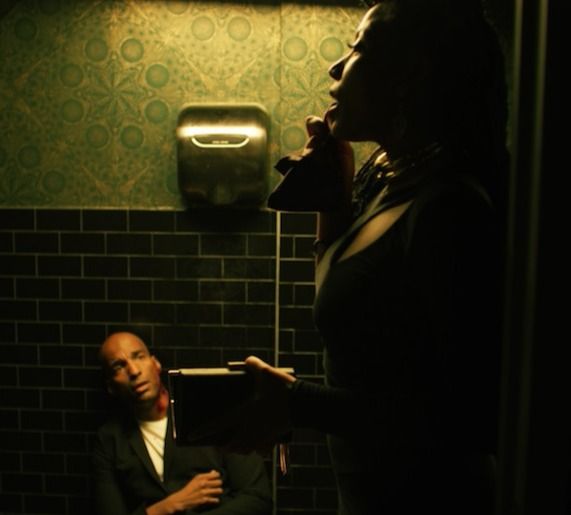
What’s next for the film after Sundance—where will audiences be able to view it next?
"Suicide By Sunlight," the short film, is an introduction to a larger original episodic series by the same name that we plan to introduce to the world via streaming platforms + TV. We’re excited to expand on this world through compelling characters, navigating a world where Black Vampires exist just in the margins. We are just starting our festival journey with this premiere, so folks can check out my website to keep track of the film’s journey, if they so feel inclined.
What would be your dream commercial film opportunity, in future?
This has the potential to read as random, but I really admire Rihanna and her ability to seamlessly transition into a formidable tycoon. She’s smart and clearly has an amazing team. I would love to direct content for her, through her makeup line Fenty Beauty, or her lingerie Savage x Fenty. Even if she forayed into trash bags, I would have fun conceiving of a visual masterpiece to promote the sexiest trash bags money can buy.
Finally—any words of advice for aspiring filmmakers hoping to follow in your footsteps?
I always preface by saying I’m learning as I go, but advice I can confidently pass to aspiring filmmakers is to write like you’re writing for your life. It’s the least expensive element of the immensely expensive filmmaking process, and yet so few people hunker down to master this skill because it’s tedious, lonely, and not sexy, but a solid script can get your foot in the door when you don’t have the resources. Regardless of how expensive your camera is or well connected your producer is, a trash script translates into a trash film. Create prolifically with people you trust. Fail intelligently and create again. Build your village horizontally—these are the people you will rise with.
This is my advice.
